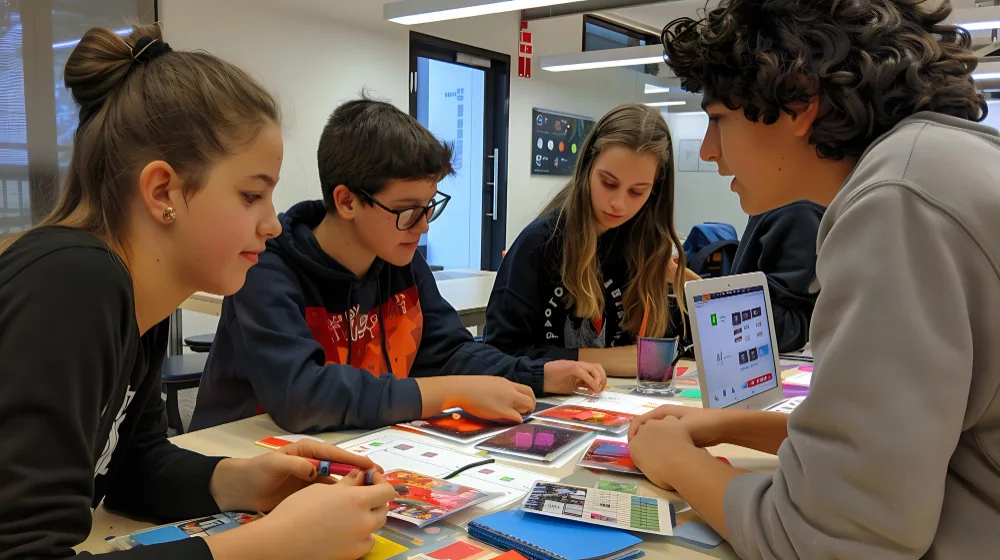
Using “Design Thinking” in Classroom: An Innovative Pedagogy
Pedagogy has been a long discussed and debated topic among Higher Education (HE) stakeholders, whether faculty members, students, industry or regulators. It has been criticized that Higher Education Institutions (HEIs) have somehow failed to equip students with real-time capabilities and skills. An emerging concept of design thinking appears to solve the puzzle. Design thinking is a human-centered approach to innovation and problem-solving that can significantly equip students for shaping their career.
Once faculty members start integrating design thinking principles in teaching and learning, they can have a more engaging, collaborative, and effective learning environment in the classroom.
Design thinking, as a concept involves five key phases namely (1) Empathize that means understanding the needs and experiences of students, (2) Define which indicates supporting students in clearly articulating the problem or challenge, (3) Ideate that supports students in generating sufficient ideas and solutions to problems in the classroom (4) Prototype that enables students in creating tangible representations of idea, and (5) Test which means evaluating and refining prototypes based on feedback. In order to use design thinking in the classroom faculty must have empathy-mapping and student-centered learning techniques where students begin with exercises sharing their interests, challenges, and learning preferences. The aim should be to understand students' perspectives and tailor classroom instruction accordingly. It is obvious that all this effort shall create a supportive learning environment where students feel heard and valued, leading to increased classroom engagement. The second phase would be Problem-Based Learning (PBL) where faculty present real-world problems and challenges that require students to research, brainstorm, and develop solutions. Faculty can encourage critical thinking, collaboration, and application of knowledge for students to develop deeper understanding and practical skills by working on meaningful problems and projects. This aspect of design thinking brings students closer to real-world problems and supports in bridging the industry-academia gaps. The third phase is when faculty encourage students to think freely and generate all possible ideas without bias. Faculty members could use brainstorming sessions in classroom and let students simultaneously build their networking and communication skills. Faculty teaching business and management courses are encouraged to use case studies in classroom settings and let students carry ideation and solution building. Allowing building prototypes in the third phase for business students would be carving out possible solutions for real-time problems. Building real protypes using material or digital tools is a great way in STEM and Computing streams. In phase four feedbacking provides students to test their prototypes or possible solutions with peers in the classroom and helps in refining ideas and solutions. Faculty could organize a "gallery walk" or “exhibition” where students present their prototypes or solutions to peers and receive constructive feedback.
For design thinking applications in the classroom students might prefer using technology even more than faculty members. In contemporary times integrating technology in the classroom is a norm. A host of innovative digital collaboration tools like Padlet and Workspace facilitate real-time collaboration and sharing of ideas allowing students to develop collaboration and team building skills in the classroom or even remotely as a home task. Kahoot and Flipgrid also support in engaging students in discussions and immediate feedback. Virtual Reality (VR) and Augmented Reality (AR) are part of modern classroom learning. They create immersive learning experiences for students. Hence, faculty can develop creativity and innovation, improve collaboration, enhance communication and empathy, build deeper understanding and increase engagement among students with focused use of design thinking in the classroom. Design thinking also helps to build student-centered learning environment thus heightening knowledge retention, skill development and competency building among students. Last but not the least, use of design thinking in the classroom cultivates critical thinking, problem-solving, and resilience, and prepares students for future challenges. By incorporating design thinking in classroom pedagogy, faculty can transform student learning experience, making it more engaging, collaborative, and effective. This approach not only enhances academic outcomes but also equips students with essential skills for 21st century, thus bridging industry-academia gap. Through empathy, creativity, and continuous iteration, design thinking fosters an innovative and inclusive learning environment where every student can thrive.




